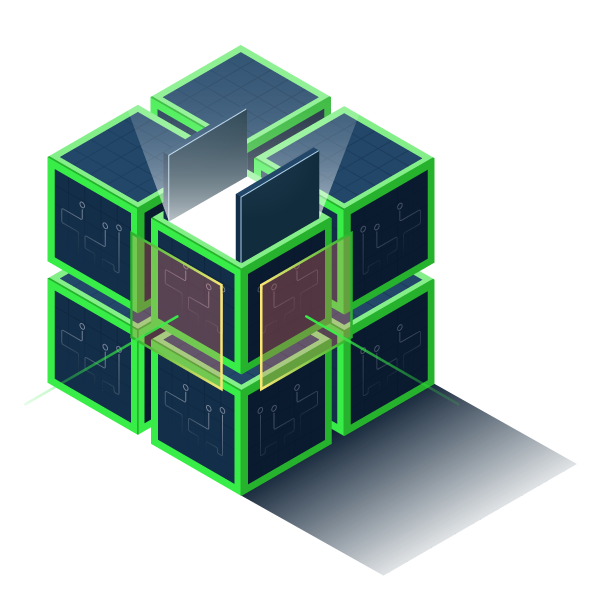Manage Your Production,
Costs and ERP Through
SEPEX Factory Operating System Efficiently
Have an operating system, not conventional OEE tracking.
Sepex analyses PLC – CNC’s process parameters instantly objectively and enables decision-makers to take quick action predictively and thus increases profitability in a way that reduces unexpected machines’ stoppages and increases their efficient value-added time.
Manage Your Factory’s Digitalization Process
With Sepex.
Every machine generates the data in every millisecond in the factory, whether it manufactures or not.. This data shows moment by moment how it was produced in the past, how it is producing now and how it will be produced in the future. You can get one step ahead of the competition with FULL Traceability and Forward-looking forecasting, with the help of accurate collection and processing of data.
4 Main Reasons of Our Projects
Are Being To Success

Instant Actionable Connection and Fast Data Management:
Through our Plug&Run technology, the installation and data interpretation processes are standardized and automatically mapped according to the sector.

Advantage of Fast Installation:
Through the cloud native feature, fast installation of the system, easy operation, uninterrupted and instant system expansion

Importance of Know-How in Vertical Industries:
Domain-specific processes and requirements are ready to use and customizable in Sepex System with automation backgroud.

Suitable for Open-Mes Concept:
Access to all systems in the factories and information Exchange are ready, Through the integration processes in the OPEN-MES concept.
Why Do Projects Usually Fail?

Failure to Collect Data:
Failure to collect data from different data sources to the common platform instantly and integratedly

Prolongation of Consultancy Processes:
After the platform is purchased, companies get stuck in the consultancy processes.

Experience and Lack of Know-How:
Only trying to build IT infrastructure, without industry and automation experience and know-how,– lack of knowledge at the OT level

Implementation of standard and general processes to all sectors with simple OEE monitoring
Implementation of standard and general processes to all sectors with simple OEE monitoring
CONNECTIVITY
SEPEX DATA ACCESSIBILITY – CPR
Transfer data to the cloud or process and while analyze at the source, giving the critical and timely visibility needed to operators to prevent potential downtime and production losses.
FAST CONNECTION TO PLC and CONTROL UNITS:
Plug and Play universal data acquisition for PLC supporting open protocols including MTConnect, OPC-UA and Modbus and specific connectors for Fanuc, Mitsubishi, Citizen, Haas, Heidenhain, Siemens Sinumerik.
CONNECT SENSORS EASILY
Add external sensors or connect existing equipment with digital/analog IO that can be configured and managed remotely via a web interface to integrate even the most demanding equipment into the system.
CONVERT DATA INSTANTLY
Our automatic data conversion engine converts machine data into standard data structures for all types of equipment to ensure consistent reporting and analytics. Example data items include Custom Sensor Values, Machine Status, Modes, Alarms, Overrides, Load, Speeds, Feeds, PMC parameters, Determinations, and more.
HIGH FREQUENCY DATA COLLECTION
Standard data acquisition rates are 1 Hz. Benefit from the 1 kHz data which providing from the specific CNC controls without using the sensors to use it as input to time series or machine learning models.
CREATE YOUR OWN EDGE ACTIVITES
Activate advanced analytics and machine learning models to analyze data at the edge. Deploy and manage specificalgorithms to Cormind CPR devices that send warning to factory workers or stop machines before equipment failure.
CLOUD INTEGRATION
Data is transferred to the cloud platform via ethernet, wifi or cellular communication instantly and securely.
FLEXIBLE DISTRIBUTION:
Easily deploy in any industrial factory with SEPEX CPR hardware directly connected to any modern machine control system via Ethernet port, install our firmware on your virtual machine/server.
REMOTE EDGE MANAGEMENT
Access and manage all your devices through SEPEX CPR Management, no matter where your machines are located.Determine problems or transfer updates to CPR without the need for an onsite visit.
KEEP DATA SAFE
Data security is the first priority in every decision . Our platform provides easy-to-use tools and scalable infrastructure to manage regular security updates/data.
ANALYSIS
DATA PLATFORM
Transfer the data to the cloud or process and Provide the critical and timely visibility to prevent the potential downtime and loss of production.
REMOTE DATA COLLECTION / STORAGE
Data transformed by SEPEX CPR, collected securely and stored in the cloud for fast and scalable data access. Embed the operational data in the machine data to measure the additional explanations and machine mode (setup, production, maintenance) for human factors.
API ACCESS
Connect with your existing workshop systems to easily integrate machine data into your digital factory Our data is fully portable with our REST and GraphQl APIs to integrate your machine data into existing BI, specific workflows, reports and other factory actions.
DATA INTEGRATION
Transmit the data from the cloud directly to Azure, AWS, SAP and other cloud, big data or enterprise applications..
RULE-BASED WORKFLOWS
Generate rule-based workflows to the workshop data element with machine conditions, alarms, performance metrics and KPIs to trigger factory worker action or system automation.
TAKE AN ACTION
MACHINE MONITORING
Determine the production bottlenecks and inefficiencies with real-time machine data. Customizable real-time dashboards, reports and notification systems enable to factory workers to reach production targets.
SITUATION/PROCESS MONITORING:
Determine the problems with real-time situations’data and analytics on the efficiency of your production equipment. Keep machines running with data-driven maintenance alerts, including key KPIs, machine alarms and situation thresholds.
DATA INTEGRATION
Transmit the data from the cloud directly to Azure, AWS, SAP and other cloud, big data or enterprise applications.
RULE-BASED WORKFLOWS
Generate rule-based workflows to the workshop data element with machine conditions, alarms, performance metrics and KPIs to trigger factory worker action or system automation.

Are You Ready to Open Pandora’s Box for Your Business?



